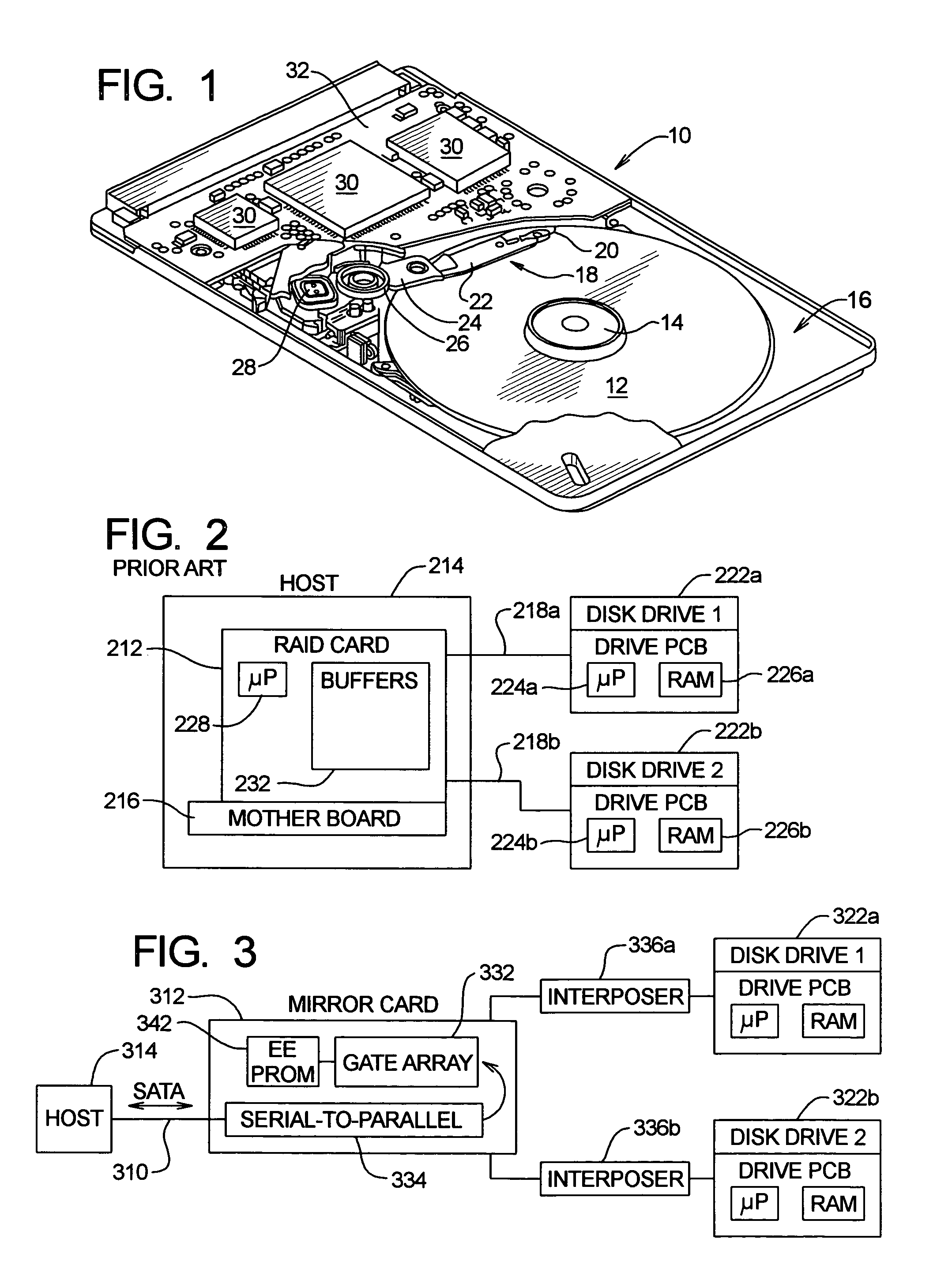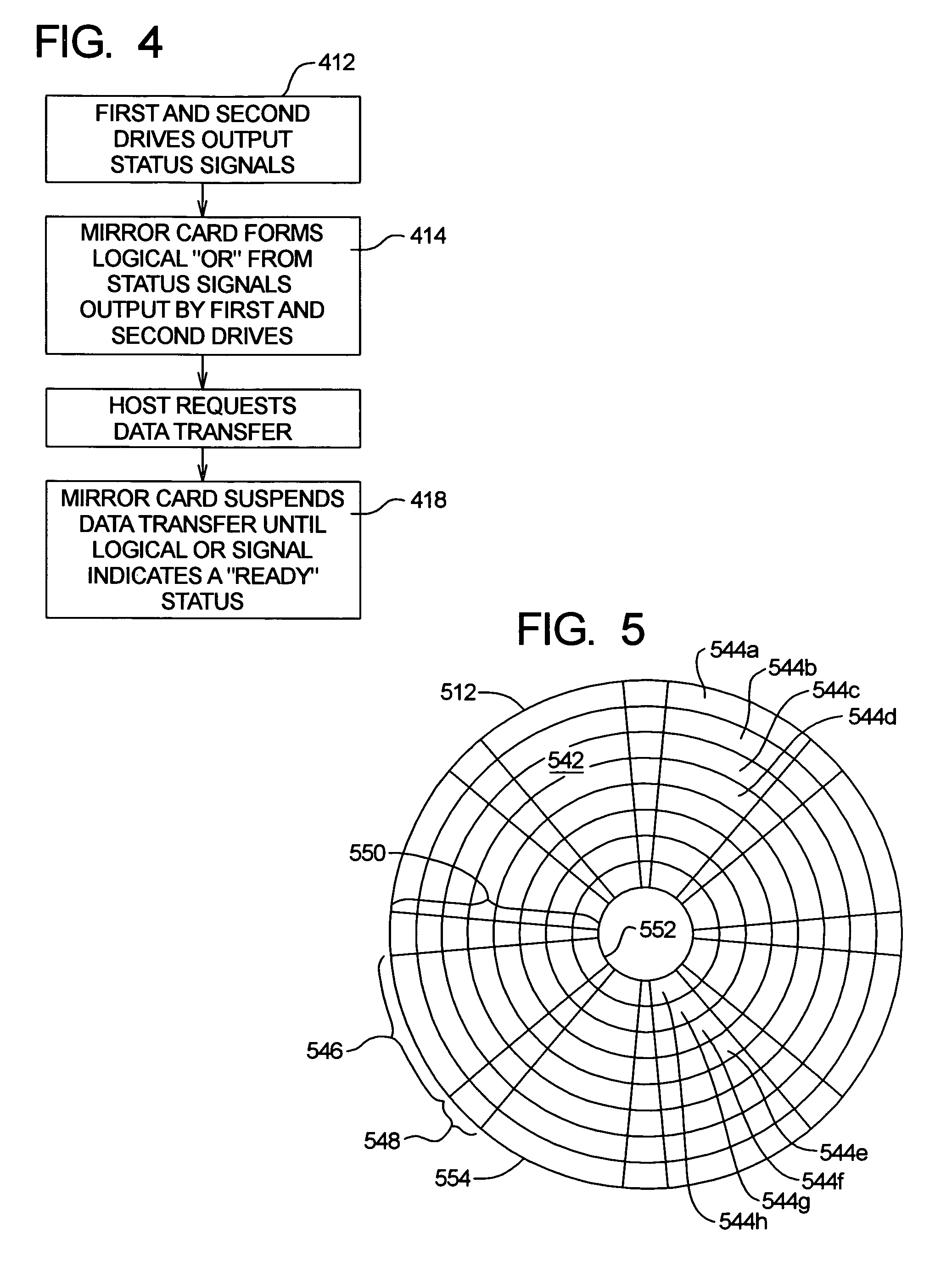RAID system and method compatible with improved drive select
a drive select and drive technology, applied in the direction of input/output to record carriers, redundancy hardware error correction, instruments, etc., can solve the problems of system vulnerability, system raid system difficulty, and relatively complex system of microprocessors and/or data buffers, etc., to achieve the effect of improving performan
- Summary
- Abstract
- Description
- Claims
- Application Information
AI Technical Summary
Benefits of technology
Problems solved by technology
Method used
Image
Examples
Embodiment Construction
[0085]Data storage devices including, e.g., those normally provided as part of, or in connection with, a computer or other electronic device, can be of various types. In one general category, data is stored on a fixed or rotating (or otherwise movable) data storage medium and a read head, a write head and / or a read / write head is positioned adjacent desired locations of the medium for writing data thereto or reading data therefrom. One common example of a data storage device of this type is a disk drive (often called a “hard” disk or “fixed” disk drive). Although many concepts and aspects pertaining to the present invention will be described herein in the context of a disk drive, those with skill in the art, after understanding the present disclosure, will appreciate that the advantages provided by the present invention are not necessarily limited to disk drives.
[0086]Computer disk drives store information on magnetic disks. Typically, the information is stored on each disk in concen...
PUM
 Login to View More
Login to View More Abstract
Description
Claims
Application Information
 Login to View More
Login to View More - R&D
- Intellectual Property
- Life Sciences
- Materials
- Tech Scout
- Unparalleled Data Quality
- Higher Quality Content
- 60% Fewer Hallucinations
Browse by: Latest US Patents, China's latest patents, Technical Efficacy Thesaurus, Application Domain, Technology Topic, Popular Technical Reports.
© 2025 PatSnap. All rights reserved.Legal|Privacy policy|Modern Slavery Act Transparency Statement|Sitemap|About US| Contact US: help@patsnap.com



